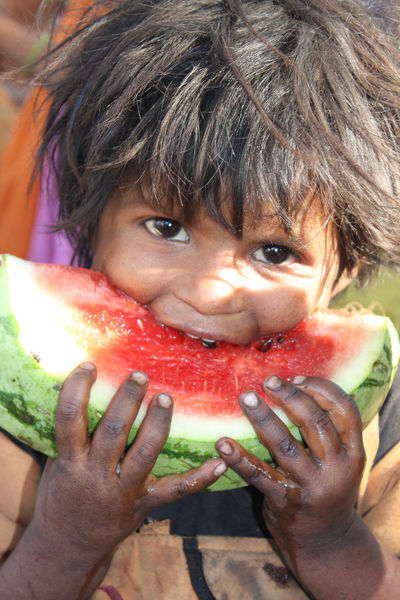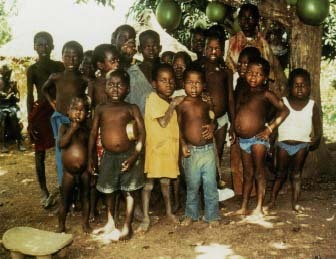Kwashiorkor

Kwashiorkor (kwash-e-OR-kor) is a form of severe malnutrition that affects children living in poverty in tropical and subtropical parts of the world. It is caused by a lack of protein in the diet. Kwashiorkor stunts growth and causes children to have bloated bellies and thin arms and legs.
KEYWORDS
for searching the Internet and other reference sources
Malnutrition
Marasmus
Protein energy malnutrition
Tanya's Story
Tanya lived outside of Tubmanburg in Liberia with her parents and four older brothers and sisters. Her family was poor, and her parents had a

What Is Kwashiorkor?
Kwashiorkor is a disease caused by the lack of protein in a child's diet. Kwashiorkor is a type of protein energy malnutrition (PEM) that is widespread throughout the developing world. Infants and children growing up in tropical or subtropical areas (such as Africa, Asia, and South America) where there is much poverty are at risk for kwashiorkor.
The term "kwashiorkor" comes from a word used in Ghana that means a "disease of a baby deposed from the breast when the next one is born." Kwashiorkor usually happens when a baby is weaned from protein-rich breast milk (for any reason) and switched to protein-poor foods. In impoverished countries, protein-rich foods are difficult to acquire.
What Are the Symptoms of Kwashiorkor?
Children with kwashiorkor have edema (excess water retention in body tissues), which makes them look puffy and bloated. They are weak and irritable, and in many cases their skin flakes, and their hair loses its curliness and color. If left untreated, kwashiorkor causes enlargement of the liver, loss of fluids (dehydration) from the bloodstream even when the child has edema, stunted growth, and severe infection due to a weakened immune system. It also can result in jaundice, drowsiness, and a lowered body temperature.
How Is Kwashiorkor Treated?
An international team of medical workers traveling in Liberia saw Tanya sitting on the ground too tired to play and realized how sick she was. They took her to the hospital in Tubmanburg, where she was kept warm and given fluids to replace those she had lost. Initially, she was given small amounts of milk and vitamin and mineral supplements. Zinc supplements helped stop her skin from flaking. After the edema went away, the doctors gave her a high-calorie diet rich in protein.
Of the children who are hospitalized and treated for kwashiorkor, 85 percent survive. Most children properly treated for kwashiorkor early enough recover completely. However, children who develop kwashiorkor before the age of two, like Tanya, usually experience stunted growth.
Can Kwashiorkor Be Prevented?
Because kwashiorkor is a dietary deficiency disease, it can be prevented by eating a well-balanced diet. However, in many parts of the world, people are too poor to provide their families with protein-rich foods, or such foods are not available. International efforts to provide food and to teach people about growing different kinds of foods, eating the right foods, and ways to limit family size are helpful in the fight against malnutrition, but it remains an ongoing problem in developing countries.
See also
Dietary Deficiencies
Jaundice
Resource
Tamberlane, William. Yale Guide to Children's Nutrition. New Haven: Yale University Press, 1997.
Comment about this article, ask questions, or add new information about this topic: